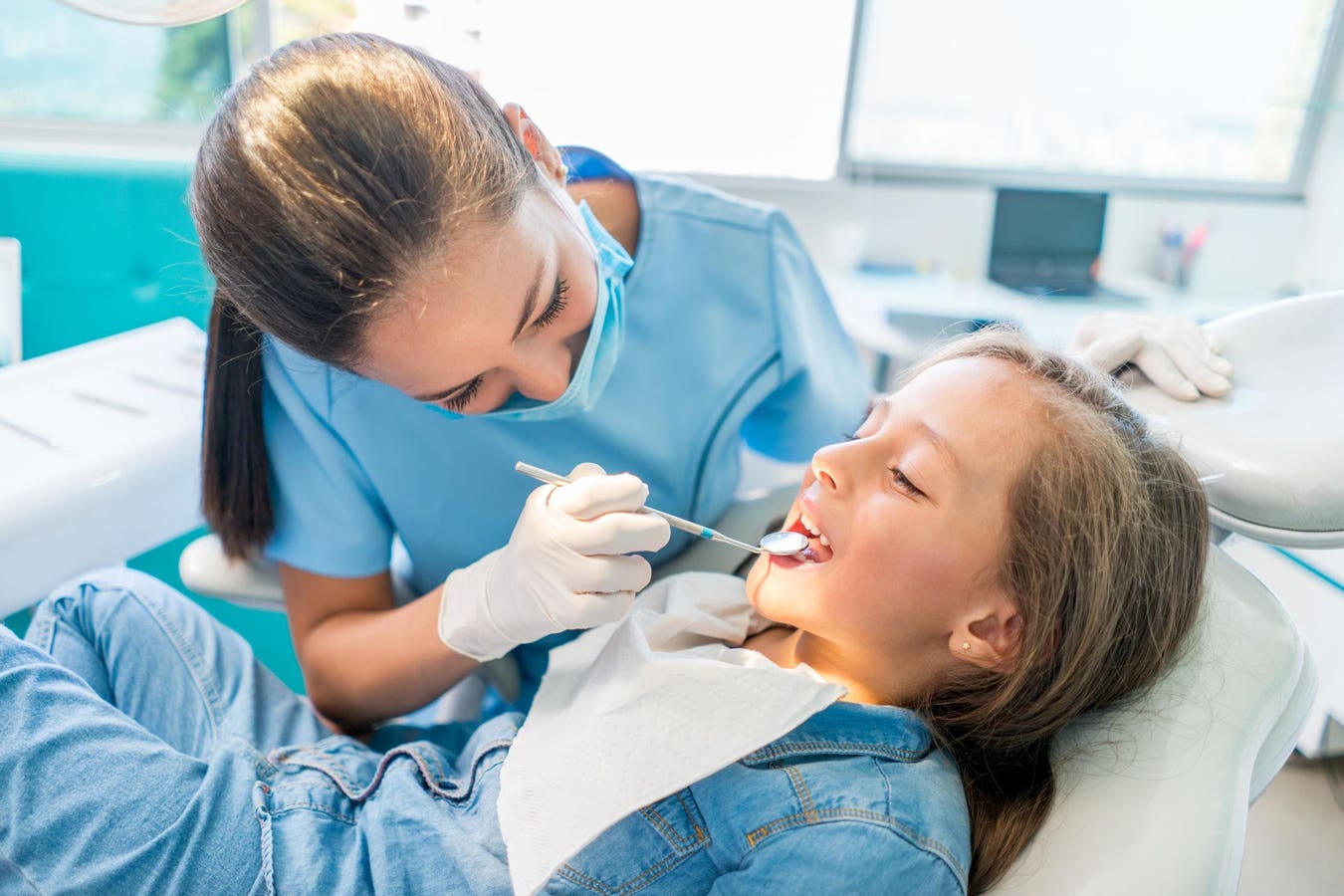How AI Is Transforming Dentistry

No, we do not have AI robot dentists… yet. However, dental practices have accelerated their embrace of emerging technology into regular practices. Artificial Intelligence is no different. In fact, AI is significantly transforming the dental industry, offering a range of innovations that enhance patient care, diagnostic accuracy, and operational efficiency. Already, we see six key trends.
Beautiful girl at the dentist getting a check up on her teeth – pediatrics dental care concepts
getty
1. Enhanced Diagnostics and Treatment Planning: AI is revolutionizing diagnostics in dentistry, particularly in dental imaging where AI is enhancing diagnostic accuracy. Computer-aided detection and diagnosis systems (CAD) can read dental X-rays and cone-beam computed tomography (CBCT) images, identifying oral pathologies that might be missed by the human eye. These systems, like Pearl AI and Dent AI, excel in detecting anomalies. Now, we have improved identification of dental caries, especially between teeth, and can estimate lesion depths to classify caries accurately. For example, a study demonstrated that convolutional neural networks (CNNs) could detect caries with a remarkable 92.5% accuracy in standardized photographs.
2. Predictive Analytics and Preventive Care: AI’s ability to analyze extensive data sets has led to the development of predictive analytics in dentistry. This technology enables dentists to identify patterns and risk factors associated with oral health conditions like gum disease and tooth decay, paving the way for early intervention and preventive care.
3. Improving Patient Treatment Workflow: AI models can streamline the workflow in dental practices. Before patients arrive, AI can flag cases lacking critical baseline data or having untreated disease. During consultations, these systems will prioritize the most relevant radiographs and predicted clinical findings, enhancing the efficiency and effectiveness of patient care.
The robot dentist is treating the man at the clinic. The future of dental health and orthodontics.
getty
4. Robotic Systems in Dentistry: AI-driven robots are increasingly used in complex surgeries, which has improved precision and reduced errors. These robots can automate tasks such as teeth cleaning and orthodontic adjustments, freeing up dentists for more complex procedures. Additionally, these robots can automate the fabrication of dental implants and other prosthetics
5. Virtual Dental Assistants: AI-powered chat bots and virtual assistants are streamlining administrative tasks in dental practices, handling appointment scheduling, patient inquiries, and billing processes. This automation allows dental professionals to focus more on patient care.
Shot of female doctor talking with earphone while explaining medical treatment to patient through a … [+]
getty
6. Teledentistry and Remote Patient Care: Teledentistry, supported by AI, is expanding access to dental care, particularly in rural areas. It allows dentists to diagnose and treat patients remotely, using videoconferencing technologies. While teledenistry cannot replace all in-person functions of a dental practitioner, it can enhance quality of care to under-served areas as well as provide more rapid response in dental emergency situations.
Concerns and Future Outlook
Despite these advancements, dental professionals do have concerns regarding the use of AI. Data privacy, reliability of AI systems, ethical considerations, and the cost of implementing AI technologies are the primary concerns. Additionally, there is apprehension about potential job displacement because of AI automation. However, many dentists believe AI will positively impact dentistry, particularly in treatment planning and diagnostics in addition to elevating the quality of care to patients in more rural areas.
Overall, AI in dentistry is an evolving field with immense potential to transform patient care, improve diagnostic accuracy, and streamline operational efficiency. While challenges remain, particularly in terms of privacy and ethical considerations, the future of AI in dentistry looks promising, with continuous advancements paving the way for a new era in dental care. So, perhaps, we will see an AI robot doing our teeth cleaning in a near future dental visit.













